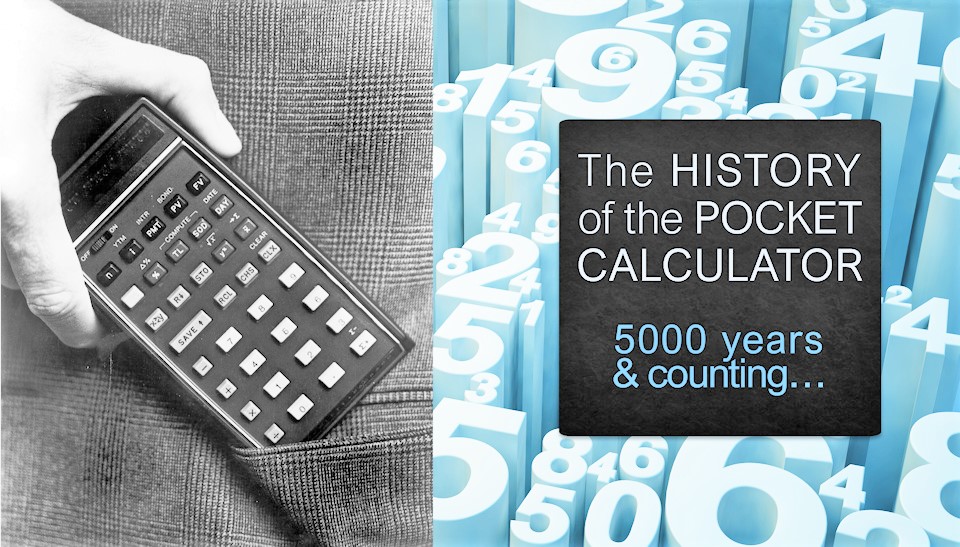
On Wed 9th Feb 2022 at the Braid Hills Hotel James Gentles GM4WZP gave a great talk on the History of the Pocket Calculator – 5000 years and counting.
Click for video recording by Colin GM4EAU (tnx) – may not be available forever – limited memory!
NOTE – THE FOLLOWING SLIDE-SHOW IS NOT YET COMLETE – WATCH THIS SPACE.
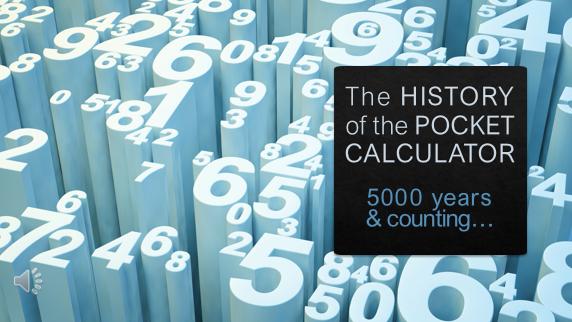
01. From beads in the far east through the abacus to modern mobile phones the technology in our pockets has changed dramatically. However a convenient tool for Natural Philosophers and Engineers to take the drudgery out of arithmetic and mathematics (in some form or another) has been a constant for over 5000 years.
Whilst paying lip service to the extremes the talk focussed on the central, pivotal point of the journey, the application of knowledge in making calculations faster, and the underlying technology to mechanise repetitive calculations,
So James covered the last 500 years in more depth, and the last 50 years with particular interest. From Napier’s Bones to Processor Emulation there was a lot of ground to cover, so we’ll not stop to double check our calculations!
James Gentles worked for Hewlett-Packard for nearly 30 years. One of the employee perks was the employee purchase scheme at factory cost prices. This meant he was able to build up a collection of calculators from the Premier technical innovator- ranging from the first scientific pocket calculator to one that could land a Space Shuttle (in an emergency!)

02. The image above shows the Hewlett-Packard HP35, the world’s first electronic Pocket Calculator to include the transcendental functions, The calculator is 50 years old this year.
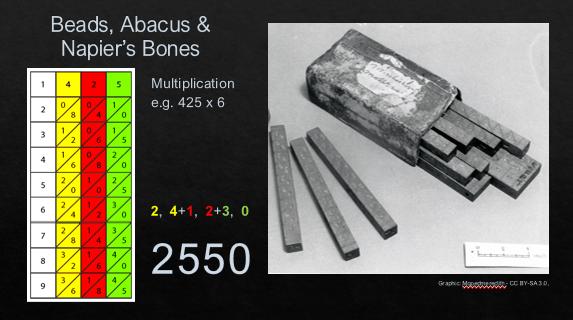
03. Mechanical assistance for computation starts 5000 years ago with counting beads and the the Abacus
Interestingly the abacus uses a variation on Base 5 (2×5 being decimal) and allows much faster addition and subtraction, with some improvement in speed of multiplication and division.
Less well known in Napiers Bones (1550-1617) which improved the speed of multiplication and division
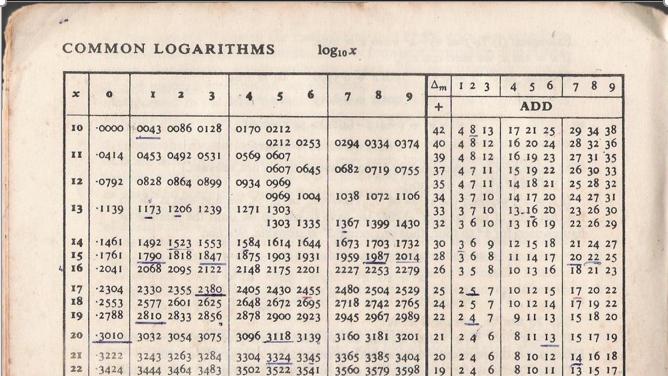
04. Napier’s Bones, The decimal point, Logarithms
Working largely independently his techniques allowed others to work faster by dramatically reducing the time taken to make routine calculations.
Whilst “e” was not discovered till after his death, he realised that re-scaling his base 10 tables would be an advantage.
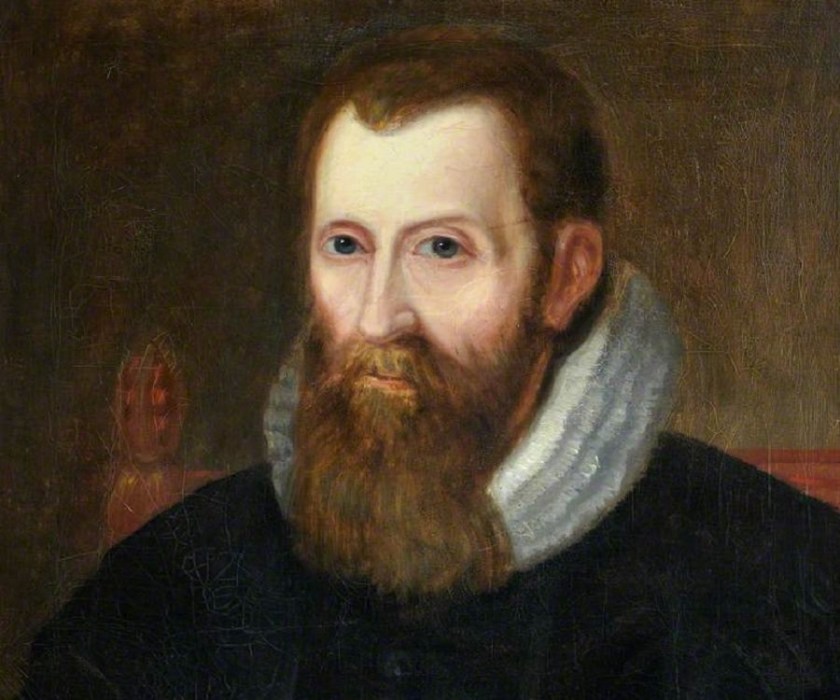
04a. John Napier (1550-1617).
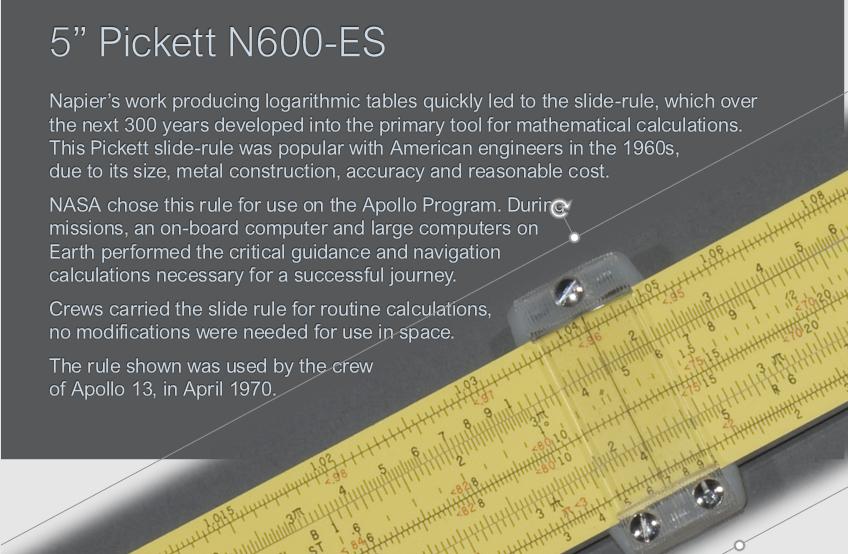
05. The Slide Rule has a long history and grew a number of different variants and engraved scales. We don’t have time to do this stalwart justice but we will talk about the 5” Pickett N600-ES
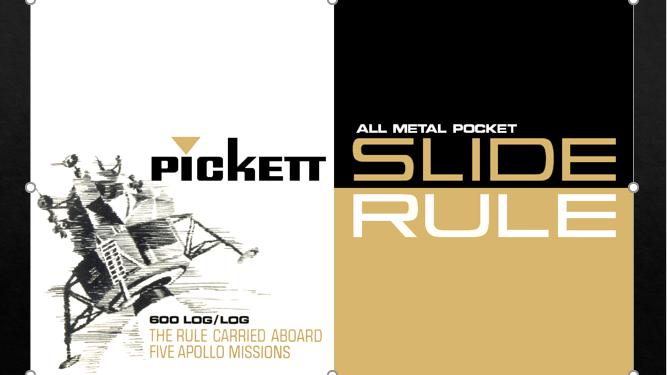
06. Picket used NASAs use to good effect with Sales Literature and Manuals featuring their use on the Apollo program accompanied by some fantastic 1960s styled pencil drawings. THIS IS A MANUAL COVER
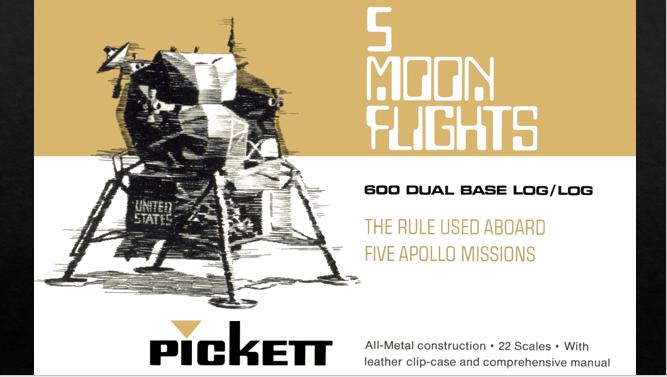
07. THIS IS A SALES AMPLIFIER
…………………………………………………………………………………………………………………….
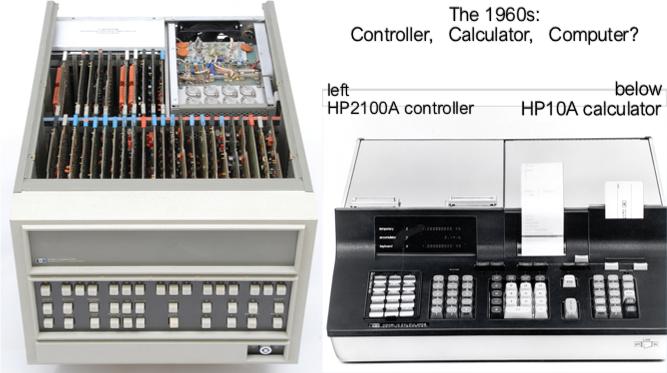
08. Early days, the terminology wasn’t fixed.
The HP2100 was made where I worked in South Queensferry 1972 – to the late 1970s
The HP10 (called a Calculator had generous IO and for me was more of a Controller
………………………………………………………………………………………………………………….
09. Announced April 1972 (shipping later that year) using 1971 TI TMS0111 with 320 program steps. $150, in 2022 that’s $1000.
Simulating a TI calculator with crazy 11-bit opcodes
THIS SLIDE REPLACED BY A LINK – CLICK.
………………………………………………………………………………………………………………
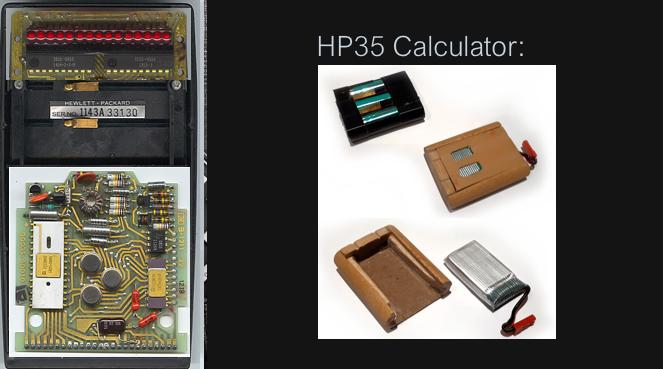
10. In 1972 the HP35, $400 ($2500 50 years on) started the dual-track Calculator War.
White ceramic 0.6” DIL 28pin control and timing of state machine.
10-pin TO99 cans, 3 ROM chips.
Gold ceramic 0.3” DIL 16-pin arithmetic and register circuits.
Top right: (2 transistors and 7 discretes) power-up pulse generator and start up.
Top left: (2 transistors, transformer et al) 3.75 volts in to +7.5V, +6V, and -12V.
……………………………………………………………………………………………………………………..
11. Also in 1972 the HP35, started the dual track Calculator War
Dave Packard did not like the LED display with magnifying lenses and high power consumption. He advocated the new LCD technology, but it wasn’t mature enough, it would take another 5-10 years.
THIS SLIDE REPLACED BY A LINK – CLICK.
11. Just a picture of a calculator, except it’s a simulator, and the buttons really work.
……………………………………………………………………………………………………………………….
12. Reversing Sinclair’s amazing 1974 calculator hack – half the ROM of the HP-35
THIS SLIDE REPLACED BY A LINK – CLICK.
1974 Sinclair Scientific A miracle to get so much into such a small code space at the expense of processing time and accuracy, a calculated strategy by marketing, however there is 2-digit accuracy and there are some places where it is just PLAIN WRONG ANSWERS!
Operation: HP35 Sinclair
Antilog 2.00000 100.00000 1.0000 02
Antilog 1.99995 99.988488 9.9900 01
Antilog 1.99996 99.990790 0.0000 00
……………………………………………………………………………………………………………………
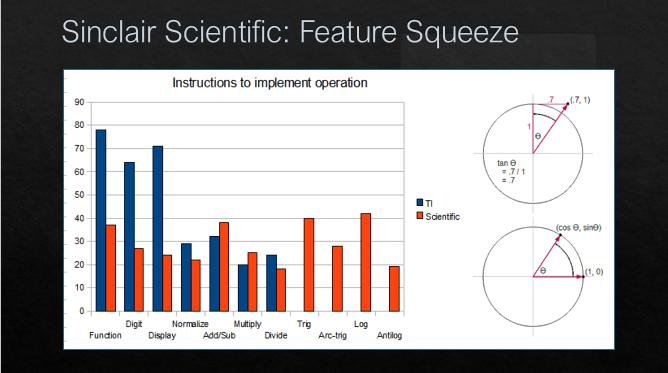
13. 320 program steps in Machine code isn’t very much!
FUNCTION: Savings by moving from Algebraic to RPN notation
DIGIT: Input keypress handling simplified by removing floating point entry
DISPLAY: Output (display) saving by removing floating point form the reported number being displayed.
The rest of the code was re-written and occupies similar space… Leaving room for the transcendental functions.
The state machine was changed to add 2 more instructions, like Add A+B and store in A as well as Add A+B and store in B. These can save a precious 1 or 2 steps in a routine, and were probably added at the end when it was realised it would JUST FIT.
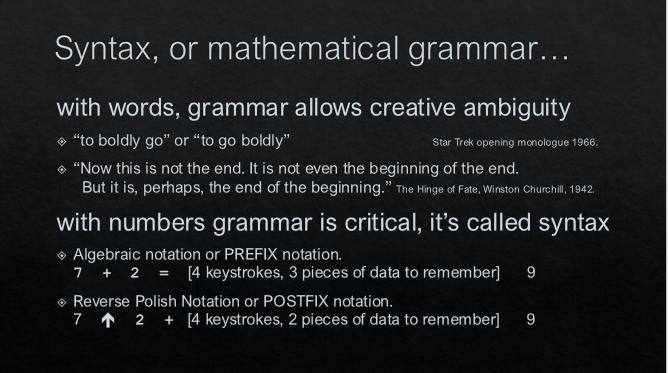
14. Language thrives on ambiguity and misunderstanding.
Mathematical Language must not contain any such trivialities;
ENTER Reverse Polish, a completely non-ambiguous way of expressing algebraic shortcuts.
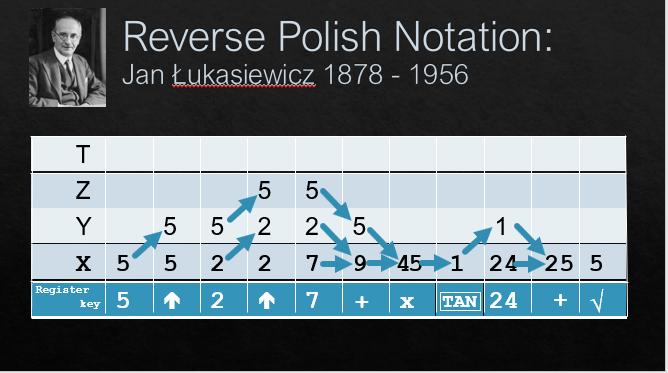
15. A flowchart showing how RPN controls a computation key-by-key.
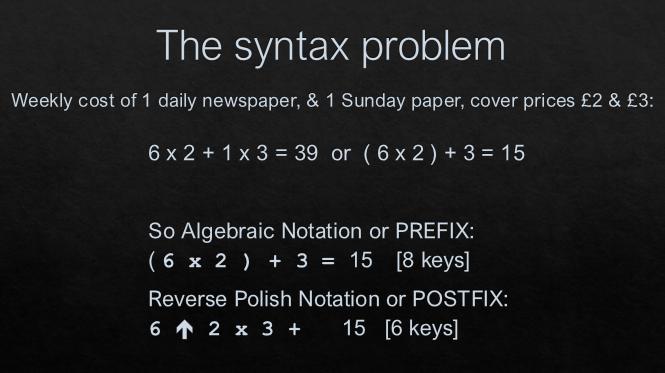
17. A real example of buying a week’s newspapers.
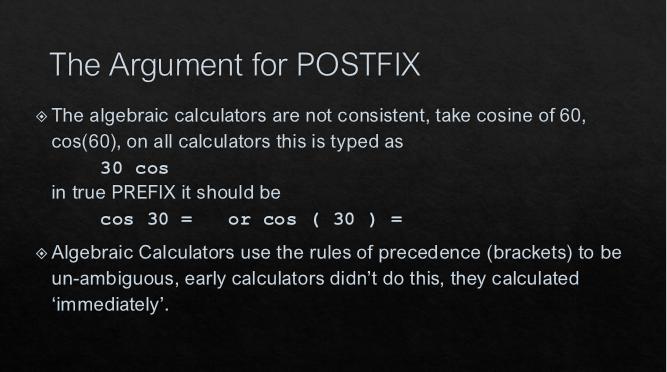
18. The anomalous behaviour which shows that Algebraic Calculators are not consistent,
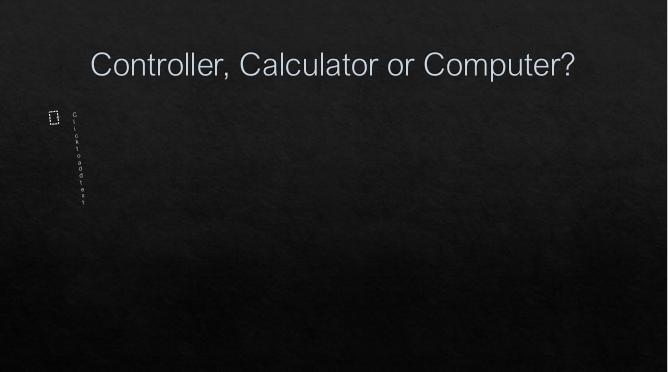
19. Early naming convention mix-ups with Calculator, Controller and Computer
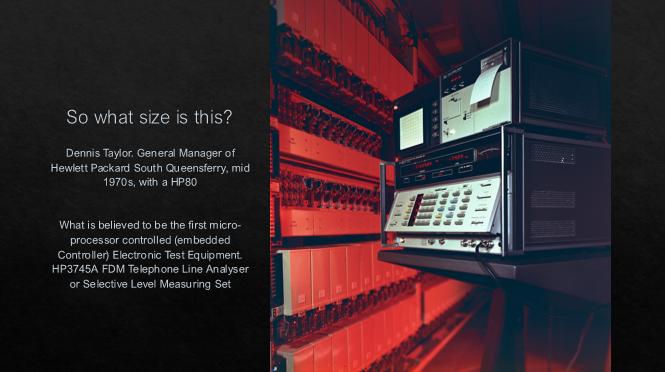
20. Selective Level Measuring Set – a very accurate Comm receiver for FDM system impairments Design in SQF, first computer-controlled instrument. Abstract user from Band Plans. Choice of designs HP35 chipset or 8008 micro-processor.
Bill Hewlett visiting SQF deliberately threw an HP35 on the floor at a meeting to demonstrate its robustness.
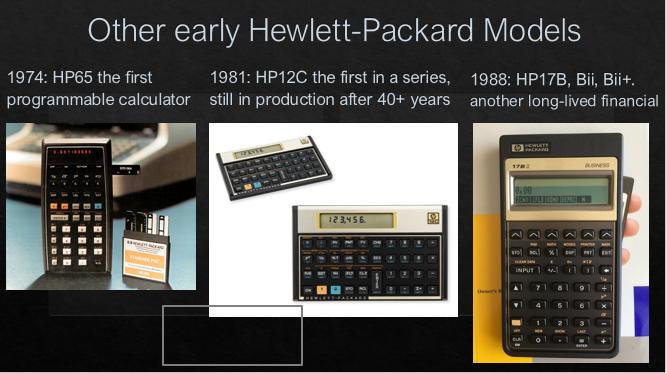
21. HP65 Magnetic Strip Programmable.
HP12C Still Selling after 40+ years! This and the 17B and 27B models do ‘Time Value of Money’ and ‘Distributed Cash Flow analysis’. These can be done recursively with a set of special registers ‘Interest rate’ and ‘# of Payments’ by looping through registers Present Values and Future Values.
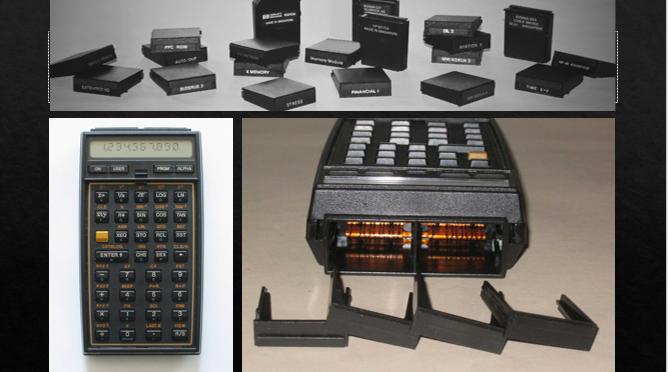
22. HP41C, 1979-1990
HP41CV, 1983-1990 (Vfor 5 slots – more memory included).
HP41CX, 1983-1990 (X-tended, memory and TIME + extra functions built-in.

23. STS-7 June 1983; STS-41g October 1983
The 41 gave way t the HP48SX, ANOTHER STEP CLOSER TO RPN PERFECTION, “Reverse Polish LISP”

24. Sally Ride, 1983, STS-7, several HP41C calculators in shot
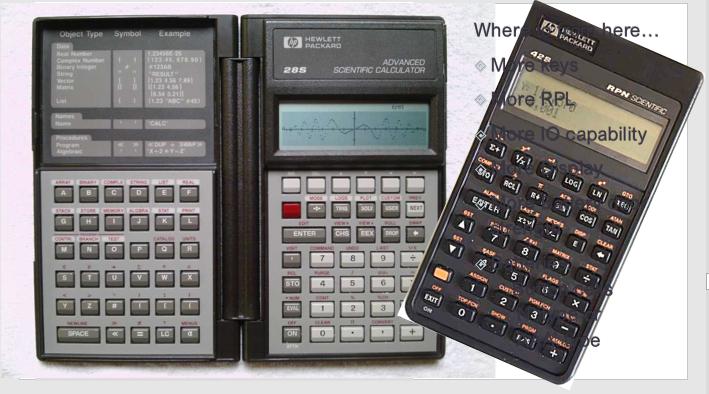
25. HP42S Replacement 41 with no IO, replacement 15? Did neither well enough to be a success but it is credited with having the best buttons ever!
HP28C (last ever C continuous) HP28S:2Kv32K memory. ALPHA fold-out keyboard. Weak battery cover. Move to RPL.
Unidirectional IR port. First to use COMPUTER ALGEBRA SYSTEM.
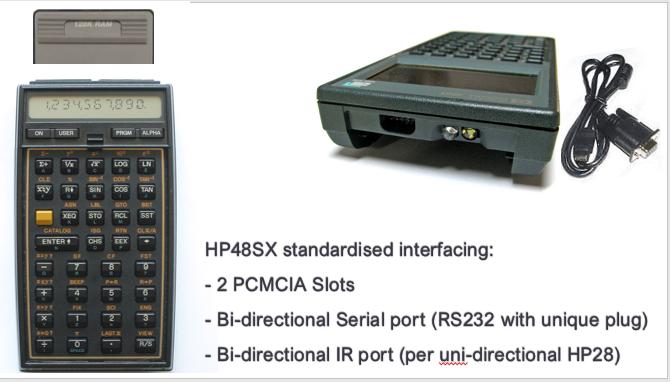
26. HP48SX:
1. More buttons
2. More Display
3. Standardised interfacing (3 types).
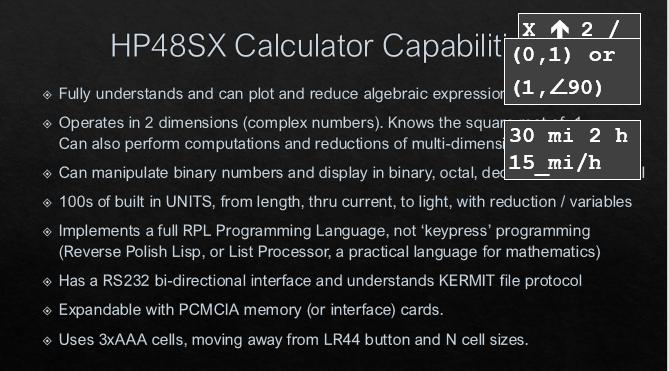
27. Bullet 1,2 and 4 have example display pop-ups.
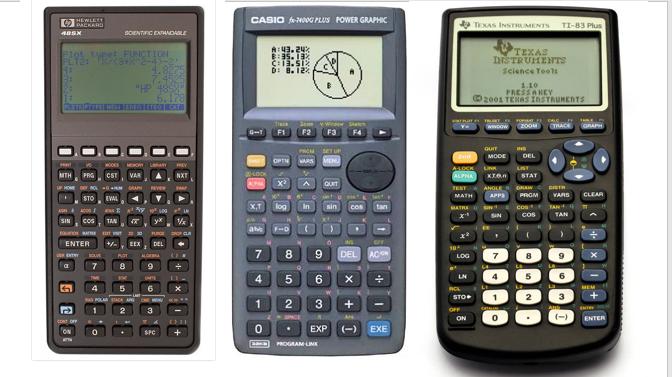
28. A crammed market, everyone following the design rules of the leader, trying to beat their price.
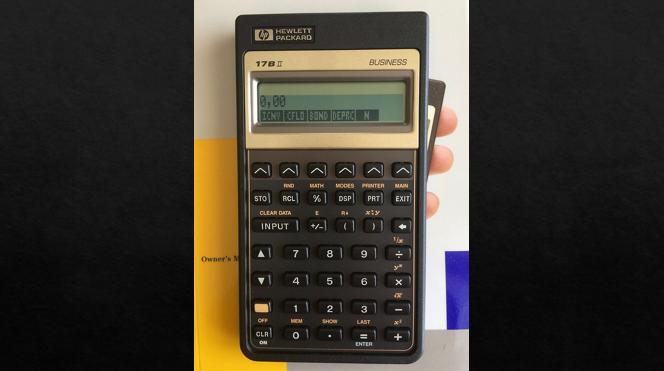
Caption 30:
The HP 17Bii is another Business Calculator, this one is still made, only 30+ years old…
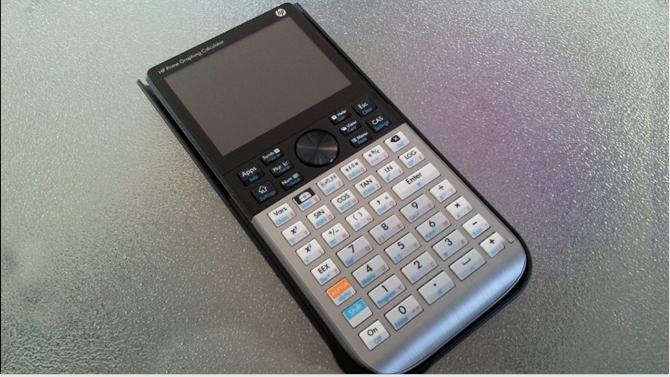
32. HP Prime. The 48/49/50 series meets the WiFi age and Smart-phone behaviours. Introduced in 2013, G1 200 and current G2 in 2018.
PCMCIA cards become SD, IR/RS232 link becomes WiFi, colour, Appi. RPL becomes PPL Computer Algebra System (CAS), RPN,
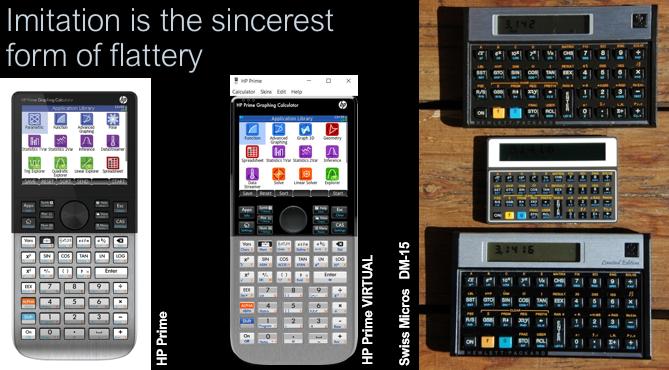
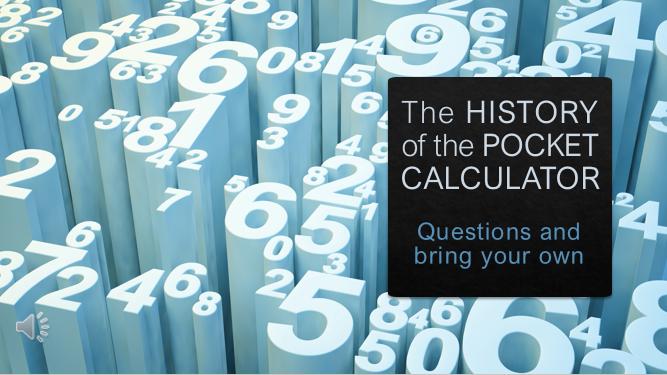
QUESTIONS?
Tnx James for a really great talk!
==================================================
